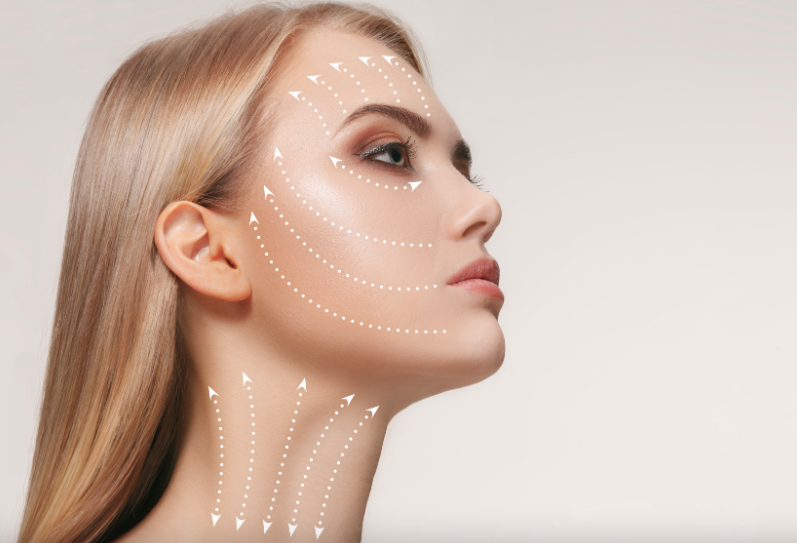Face lift

There are more than a thousand face procedures and many different types of facelifts.
Each type of lift in the face and neck region is specifically tailored to each person’s needs. The main objectives of this surgery are to treat the loosening of the skin and subcutaneous tissues (front, cheeks, jaw line, neck) and refresh the face, making it look years younger, but without changing any main major feature
About Face Lift
There are many different types of facelifts. Each type of lift in the face and neck region is specifically tailored to each person’s needs. The main objectives of this surgery are to treat the loosening of the skin and subcutaneous tissues (front, cheeks, jaw line, neck) and refresh the face, making it look years younger, but without changing any main major feature
There are today several types of facelifts designed to improve the defects caused by the process of ageing of the face and neck. The treatment can be either local or can include more than one area of the face. The cervico-facial facelift is the most frequently performed; it corrects the ageing defects from the eyebrows to the neck.

Type of Face Lift &
Method of Treatment

Aesthetic
Surgery.
During an appointment with Dr Xavier Tenorio, specialist in Plastic & Aesthetic Surgery, a full evaluation and careful examination will be performed. The motivations and the requests of the patient will be analysed and an attentive study of the forehead, middle, lower and neck area and its relationship with the remainder of the face will have to be done. The fees of this first consultation will be completely refunded by deducting them from the surgical fees.
Drugs containing aspirin should be stopped 10 days preceding the surgery. A disinfectant shampoo will be asked to be done the evening and morning before the surgery.
The incision: They are mainly hidden in the hair and around the ear.
- From the incisions, the skin is detached from the muscles; the extension of the dissection is done in function of each case.
- The tension of the muscular layer is restored with extreme precision while preserving its shape.
- In the event of located fat overloads, a liposuction is carried out in same surgical time: it can include the neck, the chin, the jaw line and the cheeks.
- The skin is then readapted to the new surface and the excess of skin is removed.
- According to the importance of the restoration project, the surgery can last from two to three hours.
- Although extremely rare we have to distinguish the complications related to the anaesthesia from those related to the surgery. Concerning the anaesthesia, the anaesthesiologist will explain the risk and answer the patient’s questions during a pre-op consultation. Today’s technology allows the practice of anaesthesia under the best safety conditions for the patient and the surgical team. With regard to the surgical procedure: choosing a qualified surgeon minimizes any risk. Fortunately, the serious complications are very rare and the patients are fully satisfied with their result. However, the possible complications are: Post-operative bleeding; haematoma formation which often needs to be evacuated; infection (very rare); scar abnormalities and localised alopecia (areas without hair) are very rare; nervous lesions, related to sensitive branches responsible for certain insensitivity with improves in few weeks. A paralysis of motor branches of the facial nerve is rare and fortunately temporary in the majority of cases. To conclude, a cervico-facial facelift is a procedure, whose complications are very rare but present. The recourse to a qualified plastic surgeon decreases the risks and ensures you that any complication will be treated effectively.
Aesthetics
Dressing
Three to six months are necessary to observe the final result. It is the time necessary for the residual swelling to disappear and the tissues to soften. Generally, the surgery will achieve an effect of renovation of the middle and lower part of the face and the neck, remaining however very natural without the aspect of a “lifted face”
Time of work
The marks of the surgery will gradually become less visible, allowing the return to a normal socio-professional life after a few days (6 to 20 days according to the type of surgery).
The results
The result is generally durable over time, giving to the patient a face ten to twelve years younger. This physical improvement is accompanied in general by a psychological comfort.
In the long run, a cervico-facial face lift allows fighting against the ravages of time, but ageing continues and the patient can possibly consider a new surgery over ten years.
Type of anaesthesia
Types of anaesthesia. Two options are possible; local anaesthesia deepened by sedatives or traditional general anaesthesia. The choice between these techniques will result from the discussion between you, the surgeon and the anaesthetist. An appointment with the anaesthetist will be schedule at the least 48 hours before the surgery. Hospitalisation. The surgery can be practised requires 24 to 48 hours of hospitalisation. However, in very selected cases it can be performed in a “day surgery” basis and the patient can be discharged the same day.
A cervico-facial facelift, although primarily carried out for aesthetic motivations, it is a nevertheless surgical procedure, which implies the same risks as per others surgical acts.
Although extremely rare we have to distinguish the complications related to the anaesthesia from those related to the surgery.
Concerning the anaesthesia, the anaesthesiologist will explain the risk and answer the patient’s questions during a pre-op consultation. Today’s technology allows the practice of anaesthesia under the best safety conditions for the patient and the surgical team.
With regard to the surgical procedure: choosing a qualified surgeon minimizes any risk. Fortunately, the serious complications are very rare and the patients are fully satisfied with their result. However, the possible complications are:
Post-operative bleeding; haematoma formation which often needs to be evacuated; infection (very rare); scar abnormalities and localised alopecia (areas without hair) are very rare; nervous lesions, related to sensitive branches responsible for certain insensitivity with improves in few weeks. A paralysis of motor branches of the facial nerve is rare and fortunately temporary in the majority of cases.

Contact our beauty experts
for more advice
